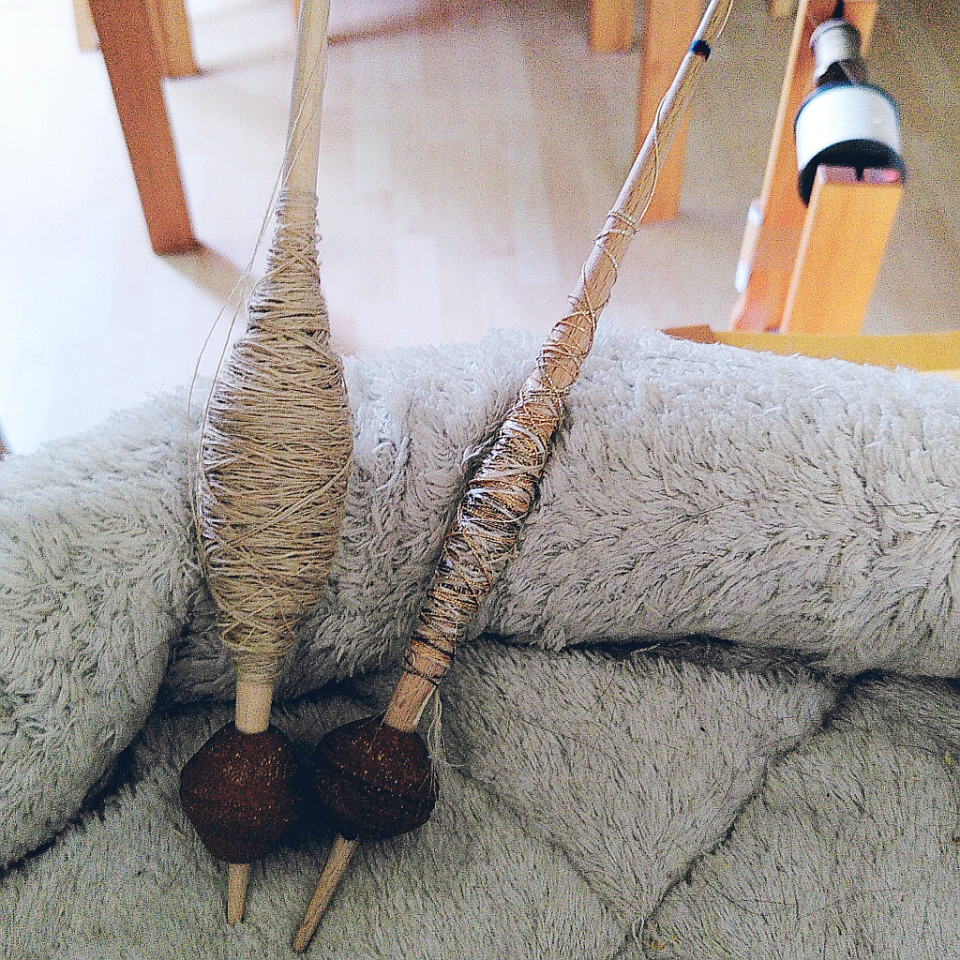I've been talking about textile reconstructions and some of the things involved in making them, but I think I haven't covered the topic of documentation for them yet... so here's a bit about that.
When I'm working on a reconstruction, I keep track of my work times. That's usually done with a time tracker for the research/planning tasks, such as reading up on textile finds, gathering information, and making plans and preliminary calculations. For the actual work away from the computer, I use a stopwatch, as that is handy and easy to use. A stopwatch is easily stopped for taking a break and started again, and that will guarantee that I have the exact times for how long things take.
Or... the almost-exact times. There's two reasons that I want to keep accurate track of times: For calculating the payment due for my work (obviously), and for gathering information about how long it takes to do things. The latter is half for being able to do better, more accurate pre-calculations and estimates, and half for research purposes. How well the times taken are suited for research depends, of course, on the tools used and the processes in detail, so I won't use my spinning times on the e-spinner for estimating spinning times in the Middle Ages, but there's plenty of tasks that are similar to what would have been done in the original creation to be of some value.
Now, of course, it would be helpful to separate different tasks and write down what each of them was. It makes a difference whether I'm sewing a straight line, or whether I'm hemming seam allowances. It is handy to know how long it takes to spin as opposed to weaving, and then there's the yarn skeining time, and time needed to set the twist. All of these could be just taken together as work time on item X, but it's of more help for my future work to have the extra detail.
Which, of course, adds some overhead work time for documentation.
It's also a smart idea to take at least some rough notes about how things are done, if it's not so simple that there's no other way. (Spinning would be an example for that. But it could already be interesting to note whether a pair of hose was sewn from the bottom up, or from the top down.) A few photos taken of the process also don't hurt...
In some cases, when a reconstruction is ordered, the museum asks for a bit of "making of"-documentation, which could be pictures or videos, or both. That makes it easier to remember to do the visual documentation - for all the other things, having something to blog about also means I usually take a few photos of things going on.
Otherwise, regarding spinning, I record the following things in an Excel sheet:
Bobbin number (so I can keep track of the yarn batches) and how long the spinning time for that bobbin was; how many turns on the skein winder (I have a counter for that, so this is a quick and easy way to measure yarn length); weight of the skein. Then my sheet does the calculation on yarn length (number of turns multiplied by 1.69, as that's my skein circumference), spinning speed in metres per hour, and nM as the yarn grist. I'm also getting a running calculation on how much yarn I have (adding the bobbins/skeins already done), and how much is left to do for the project according to my and the weaver's estimates.
So far, I have found that spinning time does vary according to the type of yarn, the amount of twist, and the fibre - but it's usually in a similar range. It does look like I have a normal drafting speed that I will fall into, and that limits the overall working speed. Not very surprising, but there you are.
Do you document your spinning? Or are you tempted now to do so?







